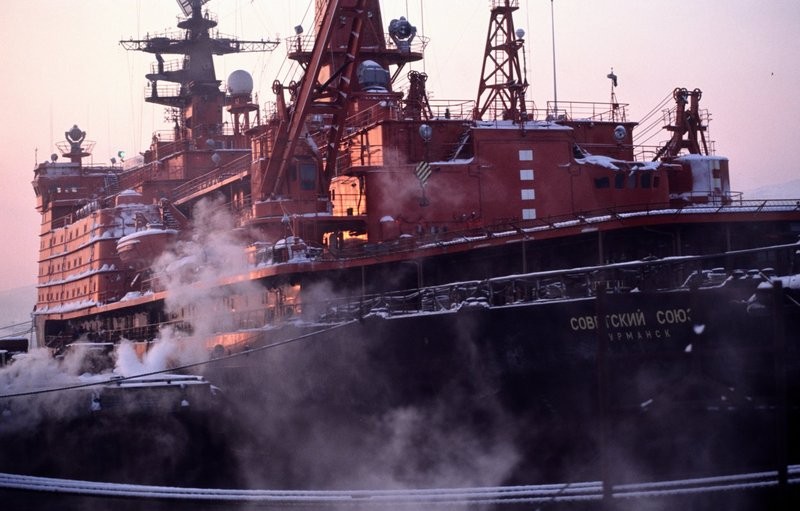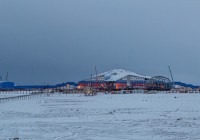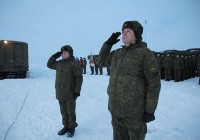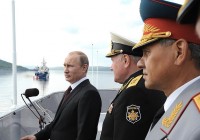
Nuclear powered icebreaker could be Arctic military command post
ADVERTISEMENT
The offer is sent from Rosatom Director Sergey Kiriyenko to Denfense Minister Sergei Shoigu, reports RIA Novosti.
“Sovietsky Soyuz” is a twin-reactor icebreaker of the Arktika-class and has been laid-up at Atomflot north of Murmansk since 2006. For the last few years, the modernization work has been carried out on board aimed at bringing the icebreaker back into service later in 2016.
Russia is currently building new and re-opening former military bases in the Arctic, including on the Franz Josef Land, Novaya Zemlya and the New Siberian Islands.
A floating command post, like the “Sovietsky Soyuz” will be able to move over large distances in the Arctic waters in relatively short time. The vessel can sail in up to 20 knots, crush ice and can operate in harsh Arctic climate like no other vessels ever built.
The icebreaker “Sovietsky Soyuz” (Soviet Union) was commissioned in 1990 and has served along the Northern Sea Route. During the 90ies, the vessel was used on tourist voyages on several occasions to the North Pole.
The two reactors generate 171 MW each providing some 75,000 hp to the three propellers. The icebreaker can crush ice thickness of up three meters. On voyages, the vessel has a crew of up to 200 persons.
From December 2014, the Northern fleet became responsible for Russia’s new Arctic Joint Strategic Command. The headquarters is in Severomorsk on the Kola Peninsula, some 10 kilometers north of the Atomflot service base for nuclear powered icebreakers in the Kola fjord.
ADVERTISEMENT
“Sovietsky Soyuz” will, if given to the Navy, not be the first nuclear powered command vessel in operation. From 1989 to 2001, the Soviet Union operated the communication and command ship SSV-33 “Ural” with the Pacific fleet. The vessel was anyhow way to expensive to operate in the late Soviet period and was mainly laid-up at port.





